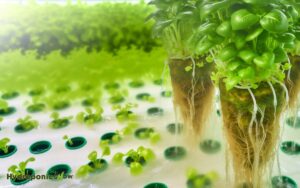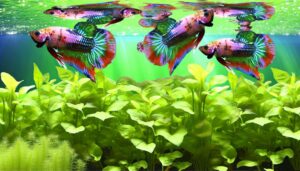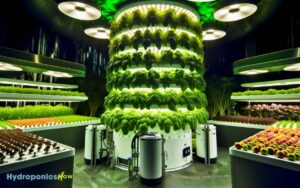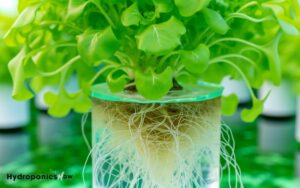Does Hydroponics Save More Water Than Traditional Gardening?
Yes, hydroponics saves a considerably larger amount of water than traditional soil-based farming. You’ll see up to 90% water savings because the system recirculates nutrient-rich water efficiently.
Traditional farming often wastes water due to uneven distribution and high evaporation. Hydroponics uses precise sensors to deliver only the needed amount of water, minimizing waste.
Studies in Arizona, Singapore, and the Netherlands have shown substantial reductions in water use with hydroponics, ranging from 85% to 95%.
It’s an eco-friendly agricultural method that’s effective in conserving water, especially in urban settings. To explore these benefits further, you’ll uncover even more compelling data.
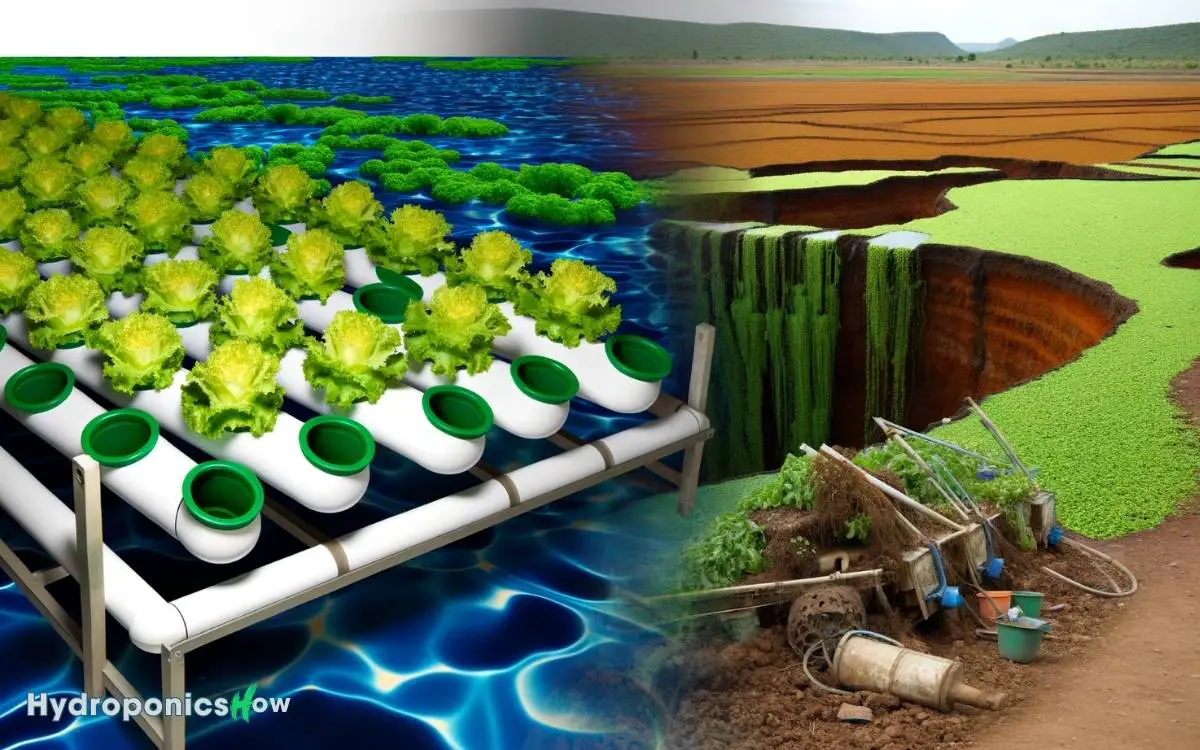
Key Takeaways
Understanding Hydroponics
Hydroponics, a method of growing plants without soil, relies on nutrient-rich water solutions to deliver essential minerals directly to plant roots. This precise nutrient delivery system allows you to control the exact composition of minerals, ensuring ideal plant growth. In addition to promoting faster plant growth, this method reduces the risk of soil-borne diseases and pests. Furthermore, hydroponics and water conservation go hand in hand, as these systems use up to 90% less water than traditional soil-based farming by recycling and reusing nutrient solutions. This efficiency makes hydroponics a sustainable choice for agriculture, especially in regions facing water scarcity.
Evidence shows that plants grown hydroponically can achieve faster growth rates and higher yields compared to traditional soil-based methods. By eliminating soil, you minimize risks like soil-borne diseases and pest infestations.
Additionally, you can adjust pH levels and nutrient concentrations in real-time, providing a tailored growth environment. This method’s controlled conditions make it ideal for urban farming, where space and resources are limited.
Hydroponics offers a sustainable, efficient alternative to traditional farming, promoting healthier plants and maximizing resource use.
Water Usage in Hydroponics
In hydroponics, water usage is optimized through efficient recirculation systems that minimize waste. Reduced evaporation rates further enhance water conservation, ensuring that plants receive precise hydration.
This method markedly lowers overall water consumption compared to traditional soil-based growing.
Efficient Water Recirculation
Efficient water recirculation in hydroponics systems can reduce water usage by up to 90% compared to traditional soil-based agriculture. In hydroponics, water is continuously recirculated, minimizing loss and maximizing efficiency.
You’ll find that this closed-loop system allows plants to absorb nutrients more effectively, leading to healthier growth with less water. Studies show that hydroponic systems use only 10% of the water required for conventional farming.
Sensors and automated controls monitor water levels, ensuring ideal usage and reducing wastage. Additionally, hydroponics eliminates runoff, a significant issue in soil-based methods, where water often escapes into the environment.
This technology-driven approach makes hydroponics a sustainable and water-efficient option for modern agriculture.
Reduced Evaporation Rates
You’ll notice a significant reduction in evaporation rates with hydroponic systems, as the water is contained and shielded from direct exposure to the atmosphere.
By minimizing water contact with air, hydroponics substantially cuts down on water loss. This efficiency is achieved through closed-loop systems where water is recirculated, maintaining its availability for plant uptake.
Key advantages include:
- Reduced water waste: Less evaporation means more water remains available for plants.
- Controlled environment: Hydroponic setups often operate in greenhouses, further reducing exposure.
- Precision delivery: Water is directed exactly where needed, minimizing loss.
- Lower humidity levels: Reduced evaporation helps maintain ideal humidity, benefiting plant health.
- Sustainable practices: Conserving water aligns with eco-friendly agricultural methods.
Hydroponics, hence, offers a technically sound solution to water conservation in agriculture.
Traditional Farming Water Needs
In traditional farming, you need to take into account various irrigation techniques and their efficiency. Surface irrigation, for instance, often results in significant water loss due to runoff and evaporation, whereas drip irrigation can be more effective in minimizing waste.
Additionally, soil water retention plays an important role, as different soil types can dramatically affect how much water plants actually receive.
Irrigation Techniques Comparison
Traditional farming often requires substantial water inputs due to the inefficiencies inherent in surface irrigation methods like furrow and flood irrigation.
These techniques tend to have high water loss through evaporation, runoff, and deep percolation, leading to inefficient use of water resources.
To analyze this further, consider the following:
- Evaporation Losses: Significant water evaporates before reaching plant roots.
- Runoff Issues: Water often flows away from the target area, wasting resources.
- Deep Percolation: Excess water percolates beyond the root zone, becoming unavailable to plants.
- Uniformity Challenges: Achieving uniform water distribution is difficult, leading to uneven growth.
- High Labor and Cost: Managing these systems requires more labor and higher costs.
These factors highlight the inefficiencies and resource demands of traditional irrigation techniques.
Soil Water Retention
Effective soil water retention is crucial in traditional farming to ensure that plants receive sufficient moisture without excessive water loss.
You’ll need to understand how soil composition, organic matter, and mulching contribute to water retention. Sandy soils drain quickly, while clay soils retain water but risk root suffocation.
Organic matter, like compost, enhances soil structure, improving moisture retention and root growth. Mulching reduces evaporation, maintaining soil moisture.
| Factor | Impact on Water Retention |
|---|---|
| Soil Composition | Varies between types |
| Organic Matter | Increases retention |
| Mulching | Reduces evaporation |
| Soil Compaction | Prevents water infiltration |
| Crop Type | Affects water needs |
Analyzing these factors helps you optimize water usage in traditional farming, ensuring sustainability and efficiency.
Efficiency of Closed-Loop Systems
Closed-loop hydroponic systems greatly reduce water usage by recycling nutrient solutions, making them more efficient compared to traditional agriculture.
By reusing water, you minimize waste and optimize resource consumption. Closed-loop systems can achieve up to 90% water savings over soil-based methods.
Here’s why they’re so effective:
- Nutrient Recycling: Nutrient-rich water is continually cycled back to the plants, reducing the need for fresh water.
- Reduced Runoff: The closed design prevents water from escaping, minimizing loss.
- Controlled Environment: You can precisely control water and nutrient delivery, leading to higher efficiency.
- Lower Evaporation Rates: Water is less exposed to air, significantly cutting down evaporation.
- Consistent Quality: Water quality remains stable, ensuring excellent plant growth.
These factors make closed-loop hydroponic systems a technically advanced solution for water conservation.
Evaporation and Water Loss
Minimizing evaporation is essential in both hydroponic and soil-based agriculture to guarantee efficient water usage and sustainability.
In hydroponics, water loss through evaporation can be much lower compared to traditional soil farming due to the controlled environment.
Hydroponic systems often incorporate covers or enclosed structures that reduce exposure to air, thereby limiting evaporation.
Conversely, soil-based systems lose more water through soil surface evaporation and plant transpiration.
| System Type | Evaporation Rate | Water Conservation Techniques |
|---|---|---|
| Hydroponics | Low | Enclosed systems, covers, regulated airflow |
| Soil-Based | High | Mulching, irrigation timing, shade nets |
| Greenhouses | Moderate | Climate control, humidity management |
| Vertical Farms | Very Low | Isolation from external elements |
| Open Fields | Very High | Dependent on weather, irrigation methods |
Understanding these differences helps you make informed decisions about water management in agriculture.
Energy and Resource Costs
When comparing hydroponic systems to traditional soil-based farming, it’s important to take into account the higher energy and resource costs associated with maintaining ideal growing conditions in hydroponics.
Hydroponic setups require artificial lighting, climate control, and nutrient delivery systems. These elements consume substantial electricity and resources.
- Lighting: LED or fluorescent lights are essential, consuming significant electricity.
- Climate Control: Air conditioning and heating systems regulate temperature and humidity, adding to energy costs.
- Pumps and Aerators: Continuous operation of water and air pumps for nutrient solutions.
- Nutrient Solutions: Regular purchase and preparation of specific nutrient mixes.
- Infrastructure: Initial setup costs for equipment and materials are typically higher.
Taking these factors into account can help you understand the overall energy and resource demands of hydroponic farming.
Case Studies and Real-World Examples
Exploring real-world case studies highlights the practical applications and efficiency of hydroponic systems compared to traditional soil-based farming.
For instance, a study in Arizona showed hydroponics used 90% less water than conventional methods.
Similarly, a Singaporean vertical farm reported a 95% reduction in water usage. These findings underline hydroponics’ superior water conservation capabilities.
| Location | Water Savings |
|---|---|
| Arizona | 90% less water |
| Singapore | 95% less water |
| Netherlands | 85% less water |
In the Netherlands, extensive research demonstrated an 85% decrease in water consumption with hydroponics.
These examples provide empirical evidence, illustrating hydroponics’ potential to reduce water usage in diverse environments to a considerable extent.
You’re seeing a clear pattern: hydroponics consistently outperforms traditional farming in water efficiency.
Conclusion
You’ve seen the data: hydroponics uses less water than traditional farming. By recycling water in closed-loop systems, it minimizes evaporation and loss.
Sure, the initial setup might be pricier, but the long-term savings and sustainability make it a no-brainer. Real-world examples back this up, showing significant water conservation.
So, if you’re thinking of diving into agriculture, hydroponics is the bee’s knees for efficient water use and resource management.


